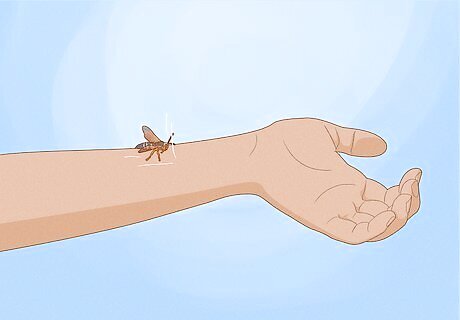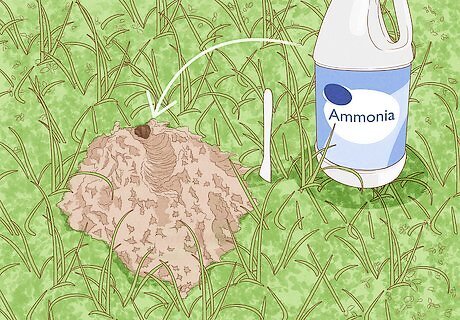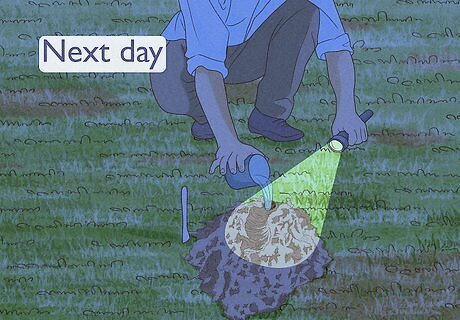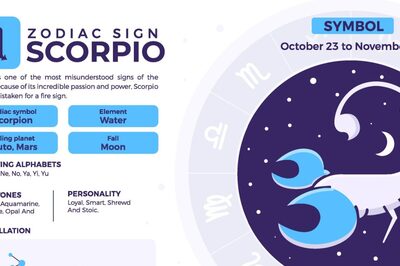
views
Background Info

Learn about ground digger wasps. Ground-digger wasps (GDWs) are very large (slightly larger than a green hornet) passive-aggressive wasps that "build" their nests in dry, unfertilized earth. They are typically large and black-bodied with yellow stripes on their back-end. When fully grown, they measure about one and a half inches (or more) in length with about a one and a quarter-inch wide wingspan.

Know the signs of ground digger wasps infesting your lawn or garden space. You'll know you've got ground-digger wasp nests when you see small granular mounds of dirt piled up anywhere from two-to-five inches in height. At the base of the mound of granular dirt will be a finger-sized hole with a "path" of dirt leading out from it. The nests will be sporadically built throughout your lawn or garden, but will typically be in the driest areas and/or under longer grass/weeds or under growing flowers. GDWs do not like, but can live in, moist soil.

Find out the local life cycle. In the Northeast US, the life-cycle of a ground-digger wasp is about one month beginning in mid-July and ending around mid-to-late August (depending on where you live, their life-cycle may start earlier or later). They go from young adults buzzing about play-attacking with each other, to full-size adults in about two-to-three weeks.

It's important to understand that they only sting when attacked. While very menacing looking, they are passive stingers, meaning only if very threatened will they attack and sting. You'd practically have to start digging into their nests while they're flying about for one to come at you and sting you (so, don't do that!). Otherwise, they tend to buzz about to check you out and to scare you away and they probably will the first time you encounter them. Know that they'd rather get on with their business of killing cicadas up in the trees than sting you.
Removal

While the method suggested here basically kills the wasps in their nests, there is no other (safe- for-nearby-pets) way to eradicate them. It is probable that you will still get nests from year-to-year, but only one, maybe two. The trick is to kill all of them while they're in their nests so their babies will not come back to the same place they were born.

Get the supplies. To eradicate an infestation of ground-digger wasps (GDWs), purchase from your local party store and supermarket, the following items: a) a large bag of white plastic knives, and b) up to three or four jug gallons of regular or lemon ammonia.

During the day, when the wasps are up hunting for cicadas in the trees, mark each nest you find with one of the plastic knives pushed into the ground as close to the hole of the nest as possible (without disturbing the hole). Leave enough of the knife sticking out of the ground so you can see it.

After 10:30 or 11pm, (later is better), that evening, using a flashlight, seek out the knives you placed and carefully pour about two-to-three cups of ammonia into each of the holes. At this time the wasps are probably nesting/sleeping, so you'll be catching them while in the nest. (You can stretch out the amount of ammonia by mixing a one-to-one ratio of water to ammonia. The diluted strength will still be enough to kill them.) Do not remove the knives.

The next day, repeat the process on any new nests that you find in the ground. You'll know the new nests from the old ones because you'll still have the knives in place from the night before. Once you've identified the new nests, remove the old knives.You may have to continually repeat the process depending on the original amount of wasps. Or you could hit the wasps with tennis rackets, knocking them to the ground then step on them.




















Comments
0 comment